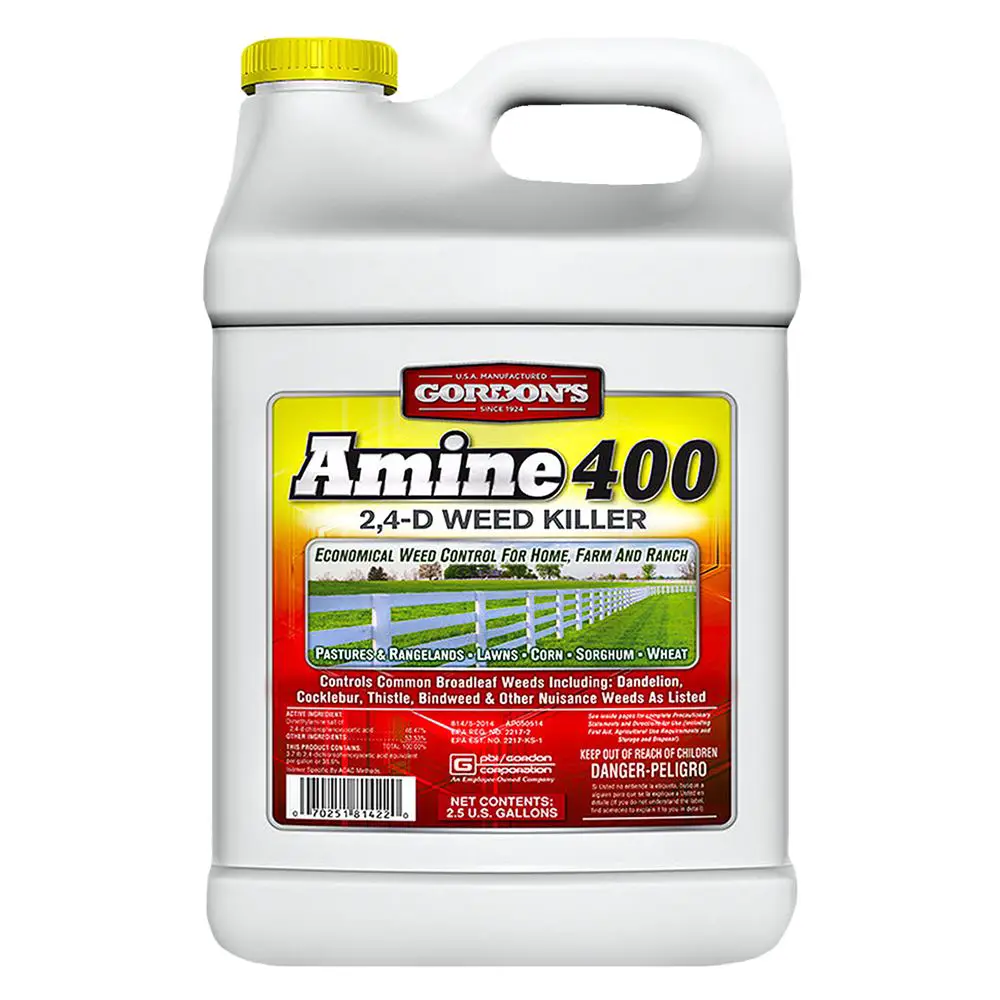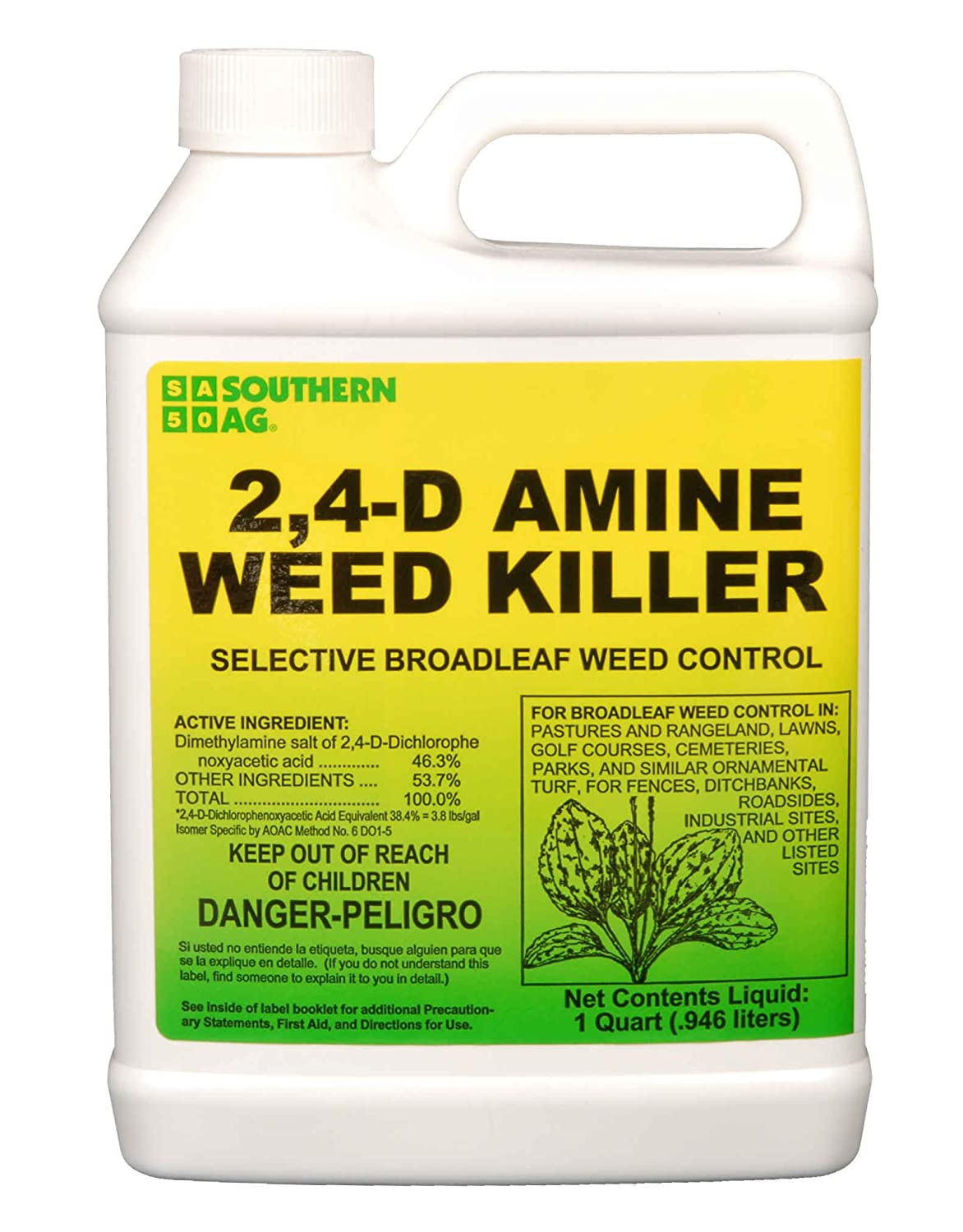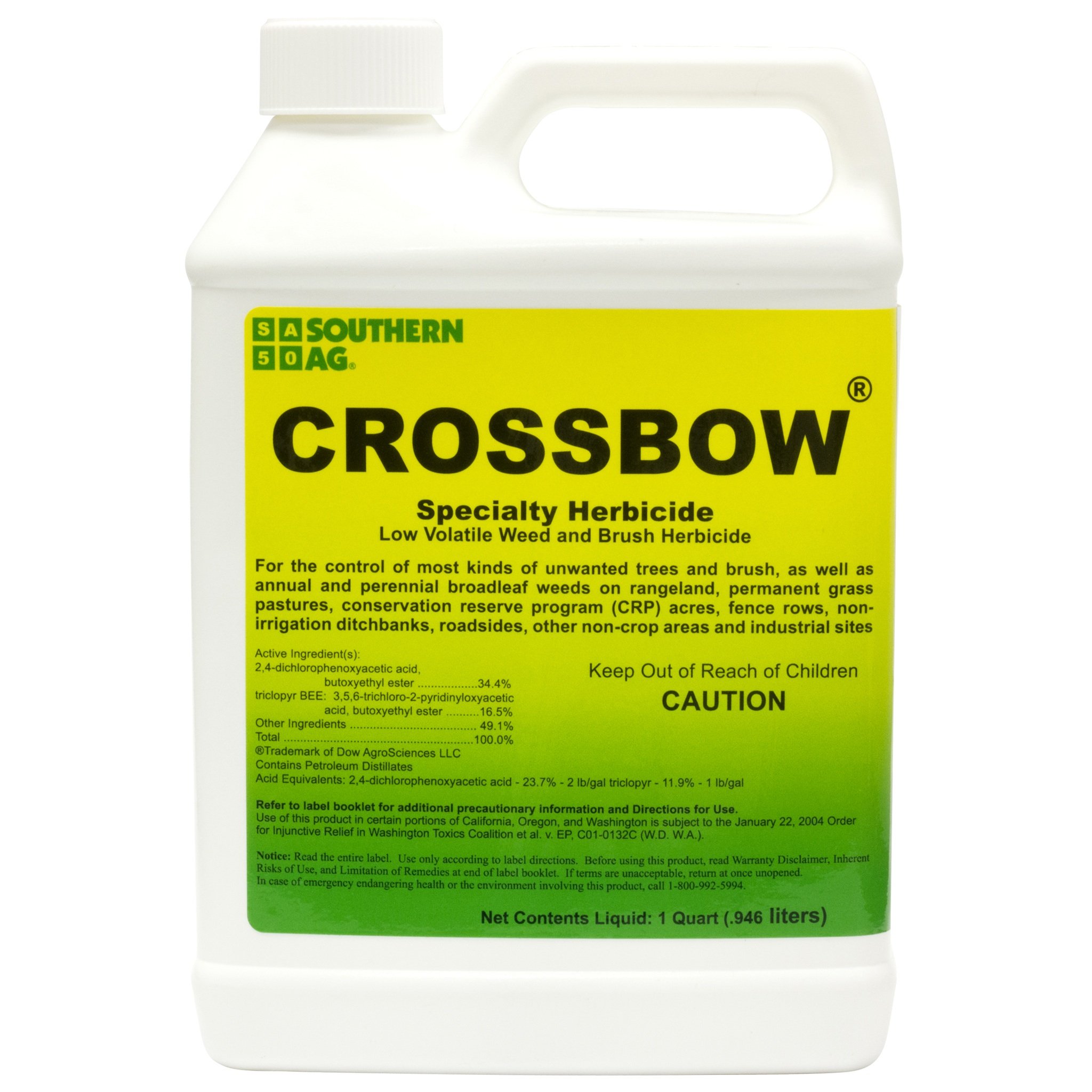Toxicity Concerns Of 2 4
As noted earlier, 2, 4-D has been studied and widely researched by scientists and concerns have been raised about the toxicity of 2, 4-D and how it can affect the health of the environment as well as humans. Some have stated that using 2, 4-D carry the risk of spreading carcinogens which can possibly cause cancer.
However, there have been conflicting reports and in fact, 2, 4-D Amine has relatively low toxicity compared to other pesticides.
2, 4-D Amine is safe to use and as long as you wear the proper safety gear and equipment when handling this product, you will have nothing to worry about when applying it to your lawns.
Cool Power Weed Killer
Cool power herbicide is a post-emergent selective herbicide used to control dandelions, plantains, oxalis, spurge, and other broadleaf weeds in chilly weather conditions.
This Herbicide is perfect for controlling weeds during winter, dormant warm turf seasons, and application during the early season in transition zones and cool-season climates.
Avoid spraying to the newly seeded grasses until well established. It is advisable not to apply more than four pints of cool power herbicide per acre in a year. Do not apply more than two times per year with a minimum retreatment interval of twenty-one days. Ensure you reseed no sooner than 3 to 4 weeks immediately after spraying the cool power product.
How Long Does 24
2,4-D Amine should be allowed to dry for 24 hours before being exposed to rain or lawn irrigation. This ensures the 2,4-D adequately infiltrates plant systems and kills weeds.
When you are planning to apply 2,4-D to your yard, make sure there is no rain in the forecast for 24 hours, at a minimum. Also, turn off all lawn irrigation and sprinklers for 24 hours. By protecting your 2,4-D application and allowing it to thoroughly dry and attack weeds, youre getting the best value on the dollar for your weed killer. Given a 24-hour drying time, 2,4-D will effectively kill the broadleaf weeds in your lawn.
Also Check: How Much To Pay Teenager For Yard Work 2019
When & How To Use 2
The best time to apply 2 4 D is in Fall and then again in Spring. In a liquid format, this herbicide is sensitive to temperature changes where anything lower than 60 degrees Fahrenheit will reduce its effectiveness, and temperatures over 90 degrees Fahrenheit will cause it to evaporate. Of course, this means using 2 4 D in the warmer summer months is practically pointless.
You should also wait for a dry and still day, ideally mid to late morning once the dew on your lawn has evaporated to apply 2-4-D weed killer. 2 4 D will be less effective if it is applied to wet surfaces because water acts as a protective barrier and will prevent the chemical penetrating the weed. Plus, even a mild wind will blow the chemical particles in places where it is not intended.
You can use 2 4 D either as a spot treatment for small patches of weeds or it can be used to treat your entire lawn. Application is the same in either event. Douse the dry leaves and stems with the herbicide and avoid using the area for 24 to 48 hours after.
How To Use 24

21 September, 2017
2,4-D is used in the control and prevention of numerous broadleaf weeds in agricultural and residential applications. It is best to apply the product in a garden pump-up sprayer, or a ready-to-use spray container in residential lawns. This type of application helps to control overspray on areas other than the targeted weeds where nearby trees and ornamentals could be damaged by the mist. 2,4-D has been an effective weed control product since its introduction in the 1940s. It can be used in spring, summer or fall as a selective herbicide when weeds are actively growing.
Also Check: What Is The Best Cordless Lawn Edger
What Time Of Day Is Best To Spray Weeds
Systemic herbicides work best when applied late morning, midday and in the afternoon in cool or cold climates. Plant growth slows down at dusk and speeds up again as the sun rises the following day. Heavy early morning dew can cause herbicides to run off, so its best apply them after dew has evaporated.
What Is The Best Application Method For 2 4
Many times, 2,4-D comes in a liquid concentrate form. Mix three tablespoons of the concentrate with 3-4 gallons of water. This mixture should cover 500-1,000 square feet of lawn space.
A portable pump sprayer is the easiest way to apply a liquid herbicide. Sweep the spray evenly over the grass, but do not spray so much that it leaves puddles!
Don’t Miss: How To Get Rid Of Ryegrass
What Is 24d Herbicide
2,4-D is a very popular and useful herbicide thats available in various different forms, including as a liquid spray or granules, salts, esters, or in an acid form. Products formulated using 24D are very toxic, and the strength of the product varies depending on its form.
2,4 D contains the chemical dichlorophenoxyacetic acid, which is an organic compound. Its generally referred to as 2,4-D for short. 2,4-D has received some bad press in recent years as it can cause environmental pollution. If you live near a waterway, overapplication of the product can seep through your soil and get into the water, resulting in the death of fish. There have also been suggestions that the product may cause cancer.
Homeowners commonly used 24D to control broadleaf weeds in their lawns. It is also used for agricultural purposes. The product can be used to kill weeds such as plantain, dandelions, chickweed, and clover. While 24D herbicides kill weeds, they wont damage the grass as long as the lawn is well established.
When applying 24D herbicides, you should always wear protective clothing and only apply in the ratio thats stated on the label. Keep children and pets away from the solution and out of your yard for six to eight hours after application.
Can You Use 2
Some selective herbicides use 2 4 D as the main active ingredient because it targets the growth regulator in some varieties of weeds without destroying your lawn. These types of weed killers are typically used in lawn weed and feed products when you are looking to get rid of weeds and improve the appearance of your lawn all at once.
There are exceptions, however, and you should always check the labeling on your 2 4 D product because some are not suitable for use on some southern lawns such as Centipede, St. Augustine, and Zoysia grass.
My go-to is this product from Ortho WeedClear Lawn Weed Killer because this one is suitable for Southern lawns as well as northern lawns too.
2 4 D should be avoided on newly sown lawns or fresh sod. In fact, its best to avoid using weed killer on new lawns for the first 2 to 6 months.
You May Like: What Is The Best Lawn Mower For Steep Hills
How Long Does 2 4 D Have To Be On Before It Rains
The preferred time is at least 24 hours to give the weed killer ample time to get absorbed by the weeds leaves. If it rains before that, then the concentration will be diluted if the 2 4 D is partly dry. If it rains before 24 hours are over, then wait a couple of days before spraying them again.
Check this too: How Long After Spraying 2 4 D Can I Mow?
A key thing to remember is to note down the time when you finished spraying the weeds so that you can have a timeline for when you should water or mow your lawn. As well as harvest fodder for your animals. Ideally, the herbicide should dissipate from healthier crops within 48 hours. But you need not worry about this as studies show that 90% of 2 4 D consumed by animals is shed unchanged. And lastly, it goes without saying that you should wear protective clothing when applying the 2 4 D to your yard or crops.
Can You Apply 24
2,4-Dichlorophenoxyacetic acid is safe for controlling lawn weeds. Most turfgrass varieties are resistant to the active ingredient. You can, therefore, apply 2,4-D on your lawn to kill a majority of broadleaf weeds. The success rate is much higher when weeds are still young and growing actively.
Being an auxin-type herbicide, 2,4-D controls weeds by altering the way cells and tissues that translocate nutrients and water grow. The chemical forces these cells to grow endlessly, thereby inhibiting their ability to provide the necessary nutrition for the weeds to grow and compete with lawn grasses.
Youll start to see the 2,4-D herbicides working within 48 hours although the complete weed kill can take up to 14 days to be complete.
Caution
It is important to read the product label to make sure it is indicated for use on the type of grass youre growing in your lawn. For instance, Hi-Yield 2,4-D SHOULD NOT be used on St. Augustine grass. It is, however, a safe herbicide for Bermuda grass lawns.
You also want to be careful not to spray 2,4-D on dormant grass. While 2,4-D herbicides wont kill grass in your lawn, they can cause injury to dormant grass especially in Bermuda grass turfs.
Recommended Reading: How To Clean Mower Carburetor
Mixing Ratio And Application Rate
Consult your package of 2, 4-D weed killers to find out what ratio to mix and apply your product at because instructions vary each brand has its own mixing ratio that will be indicated on the instructions.
However, they are usually similar. Most require you to mix about 2.5 ounces of 2, 4-D with one gallon of water. This will treat approximately 400 square feet of yard. You can double the ratio to 5 ounces for every two gallons of water if you want to treat around 800-1000 square feet of space.
Of course, this is not the mixing ratio that you will need to follow for all liquid 2, 4-D brands. For example, Hi-Yield, the first 2, 4-D weed killer product weve reviewed below, requires a mixing ratio of 3-4 fluid ounces of product mixed with 1-3 gallons of water applied for every square foot.
Mixture For Pump Sprayer

Take 2.5 ounces of liquid concentrate and mix it in one gallon of water. It will treat 400 sq. ft. of your lawn or yard area. If you want to cover an 800 sq. ft. area, double the amount of liquid and water for best results. You may increase the concentrate according to the area. Apply this mixture with a pump sprayer.
Read Also: When To Apply Crabgrass Preventer In Iowa
When Can I Mow After Spraying 24
It’s recommended to spray 2,4-D on lawns that are more than one year old. This herbicide should be washed into the ground, so you can mow before applying it. The real question is when can I mow after spraying? Well, herbicide needs some time to work his own way from leaves to roots and if you mow in that period you will shorten the weeds and remove leaves which means there will be less herbicide to work. You should wait one or even two days after spraying to mow. During that time don’t water your lawn as well. Keep your children and pets away from the sprayed area also. If the whole process didn’t work for you, wait three or four days, and repeat everything again.
What Weeds Does 2 4
It is important for us to know which plant or grass is affected by 2, 4-D weed killer. Generally, it kills broadleaf weeds but it does not work well on most grasses. It kills plants because of their cells in tissues that hold water and minerals to divide and grow without any hindrance.
Such plants are called auxin-type herbicides.
2, 4-D is very effective in croplands such as wild garlic, wild onions, smartweeds, and vines, etc. For best results, apply as a spray in warm weather when weeds or brush are actively growing.
As it is used in the seed process, it will not work on roots. You can apply it on lawns, grassy crops, or pastures. It will also control some clovers without damaging your lawn. It is formulated to kill broadleaf weeds, so it doesnt control many other grass species.
Recommended Reading: Trugreen Lawn Care Prices
Restricted Controlled Sales Products
Some restricted products are also controlled sales products.
To buy restricted controlled sales products, you must be 18 years of age or older.
A licensed seller will give you an information sheet and keep a record of sale that includes your:
- name and address
- never dispose pesticides in the garbage
- never pour pesticides down the drain or sewer
- use newspaper to wrap empty containers of pesticides
Stewardship Ontario runs a program called Make the Drop where you can search for a facility near you that accepts household hazardous waste containers and items .
If you’re unsure or have questions about how to properly dispose of a certain pesticide, contact your local ministry district office.
Factors To Consider For Successful Application Of 2
One should consider several factors right before applying the 2-4-D because taking the proper procedure is the begging of a successful journey to eliminating weeds.
While different herbicides come in different directions, there are common factors that should be observed to ensure effective and successful application and the following are the factors to consider.
Also Check: How To Fix Dead Patches In Lawn
Can I Spray 2 4
Keeping this in consideration, can you spray Roundup when grass is wet? Roundup works best when the leaves are dry, although its quick absorption rate means you can still spray the product if wet weather is imminent. Can I spray 24d on my lawn? 2,4-D herbicide is generally safe for use on grass in established lawns.
How Warm Does It Have To Be To Spray 24
For the most effective application, spray 2,4-D at temperatures 6085 . 2,4-D is less effective outside of this temperature range, meaning you will kill fewer weeds and get less value from your weed spray.
According to the Iowa State University Extension, weed killers are most effective in fall . To kill the most weeds in your yard, plan to spray in fall, once summer temperatures have begun to drop off. The second-best time to spray is in spring before summer temperatures have peaked.
Read Also: Does Lowes Rent Riding Lawn Mowers
Broadleaf Weeds Have No Chance Against 2 4
2, 4-D” looks like a weird mashup of letters and numbers to the average American. However, to those who are in the agricultural industry or are turf and lawn experts, 2, 4-D is regarded as one of the most helpful chemicals in eliminating troublesome broadleaf weeds.
2, 4-D is perhaps the most utilized broadleaf weed killer worldwide and is among the top three most used herbicide for residential and commercial lands. 2, 4-D comes in a variety of different formulations–from liquids to dusts and granules.
Solutions Pest & Lawn is proud to carry 2, 4-D Amine Selective Weed Killer, which is one of our best-selling herbicides, and for good reason, it works!
Learn more about the history and science behind this tremendous herbicide in this informative article.
List Of Active Ingredients Authorized For Cosmetic Uses

You are only allowed to use pesticides that solely contain active ingredients found on the List of Active Ingredients Authorized for Cosmetic Uses .
Some common household examples of these pesticides include:
- borax
You can also use pesticides to protect health or safety from pests such as:
- wasps or mosquitoes
- plants that are poisonous to humans by touch, such as poison ivy and giant hogweed
- fleas or ticks that bite pets
- indoor pests, rodents, or pests that can cause structural damage to the home
- rodents that may spread diseases
You May Like: How To Kill Wild Violet Weeds In Lawn
How Might I Be Exposed To 24
Products with 2,4-D may be used on farms, home lawns, roadsides, industrial areas,and pastures. You may be exposed if you are applying 2,4-D and you get it onyour skin, breathe it in, or eat or smoke afterwards without washing your hands.You also may be exposed if you touch plants that are still wet with spray. Youcan limit exposure by following the label carefully if you are using products thatcontain 2,4-D. You can also stay away from grass or plants that have been treateduntil the leaves are dry.
Advantages Of Preemergence And Postemergence Herbicides
Some of the advantages of using preemergence herbicides compared to postemergence herbicides are:
- Preemergence herbicides are applied prior to weed seed germination and emergence.
- Many preemergence herbicides are available in granular formulations. Granules are easier to apply than sprayable formulations. Additionally, granules are not susceptible to spray or vapor drift that can occur with sprayable formulations.
- With the exception of atrazine , most ornamental shrubs, trees and flowers are tolerant of preemergence herbicides. In fact, DCPA , oryzalin , benefin and benefin + oryzalin are labeled for use on selected ornamentals. Postemergence herbicides can cause injury to ornamentals unless label precautions are followed.
- Preemergence herbicides do not cause injury to established turfgrasses. In contrast, most postemergence herbicides will slightly injure or yellow turfgrasses for a short period after treatment.
The advantages of postemergence herbicides when compared to preemergence herbicides are:
- Postemergence herbicides can be applied as a spot treatment directly to a weed infestation. Preemergence herbicides are usually applied to an entire lawn area.
- Postemergence herbicides are less costly than preemergence herbicides because spot treatments can be used.
- Postemergence herbicides generally control a broader spectrum of weed species than preemergence herbicides.
Read Also: Rechargable Lawn Edger
